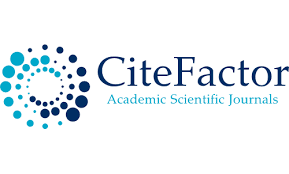Punctuation marks in the Arabic language
Keywords:
Punctuation marks, Historical overview, importanceAbstract
Punctuation in the Arabic language involves placing specific symbols between words or sentences during writing to indicate points of separation, pauses, beginnings, and different vocal tones and communicative purposes. It facilitates the writer's comprehension while writing and aids the reader's understanding during reading. The use of punctuation marks in Arabic began around a hundred years ago when it was introduced from other languages by Ahmad Zaki Pasha, upon the request of the Egyptian Ministry of Education at that time. Over time, additional marks and signals were added. The misuse of punctuation marks can lead to distorting meanings and failing to express intended messages accurately, thus undermining the writer's purpose. This issue is not limited to writing but extends to vocal expression of the intended meanings represented by these marks . The significance of this research lies in the importance of the Arabic language as a tool for communication and expression, serving as a vital means of understanding among people. Additionally, the importance of correct spelling, as a branch of the Arabic language, allows individuals to express their feelings, thoughts, and identities in written form. Moreover, writing is a crucial skill in the Arabic language, and punctuation marks are essential guidelines for proper writing that convey meanings effectively . The aim of this research is to introduce Arabic punctuation marks, clarify their functions and positions, and emphasize their necessity. The research is structured into an introduction and three sections, concluding with a conclusion and a list of sources used to enrich its content.
References
-الأخطاء الشّائعة في الأوساط الثقافية لمحمود عبد الرزاق، ط1، مؤسّسة بتانة، القاهرة- مصر، 2018.
-استعمال علامات الترقيم لوليم اسكندر، سومطرة الشمالية، الجامعة الإسلامية الحكومية.
-الإملاء والترقيم في الكتابة العربية لعبد العليم ابراهيم ، ج1، الباب الثامن، مكتبة غريب، القاهرة- مصر 1975.
-الترقيم وعلاماته في اللغة العربية لاحمد زكي، مؤسسة هنداوي للتعليم والثقافة، القاهرة- مصر، .2012
-القاموس المحيط للفيروز آبادي، ط4، مؤسسة الرسالة، بيروت، 1415هـ،
-اللغة العربية أداءً ونطقاً وإملاءً وكتابةً، مطابع الوفاء للطباعة والنشر، المنصورة- مصر.
-تاريخ بدء استعمال علامات الترقيم في الكتابة العربية لخالد سيد ابراهيم، مجلة العربي، العدد 480، مطابع الشروق، القاهرة، 1998، ص157.
-تهذيب اللغة،لابي منصور محمد بن احمد الزهري، دار التراث العربي، بيروت، د.ت.
- علامات الترقيم: تعريفها، تسميتها، تاريخها، أهميتها، أقسامها لكريم مرزه الاسدي، الحوار المتمدن، العدد 6220، 4/5 2019،.
-علامات الترقيم وأصول الإملاء لفيض الرحمن الحقاني، بيروت - لبنان : دار الكتب العلمية،2015.
-علامات الترقيم ومطبّاتها،لثريانعمان، دورية همس الحوار، 15/10/2020.
-قواعد الإملاء وعلامات التَّرقيم لعبد السلام هارون، دار الطلائع، القاهرة - مصر،.
-قواعد التعبير العربي- قواعد الكتابة، جمعية المعارف الإسلامية الثقافية، 2016.
- لسان العرب،لابن منظور، أبو الفضل جمال الدين محمد بن مكرم، ج6، دار صادر، لبنان، 2003.
- مستوى استعمال علامات الترقيم من قبل طلبة كلية التربية الأساسية في الأقسام غير الاختصاص، مجلة الفتح، العدد 70ـ حزيران 2017.
-ملتقى اهل اللغة،لمجموعة من المؤلفين، د.م،2008.
- منجد الطلاب،للستاني، فؤاد افرام، ط23، دار المشرق، بيروت-لبنان، 1986.
Downloads
Published
Issue
Section
License

This work is licensed under a Creative Commons Attribution 4.0 International License.
User Rights
Under the Creative Commons Attribution-NonCommercial 4.0 International (CC-BY-NC), the author (s) and users are free to share (copy, distribute and transmit the contribution).
Rights of Authors
Authors retain the following rights:
1. Copyright and other proprietary rights relating to the article, such as patent rights,
2. the right to use the substance of the article in future works, including lectures and books,
3. the right to reproduce the article for own purposes, provided the copies are not offered for sale,
4. the right to self-archive the article.












